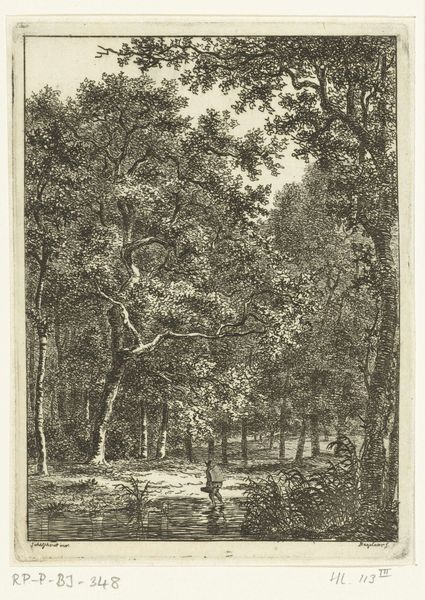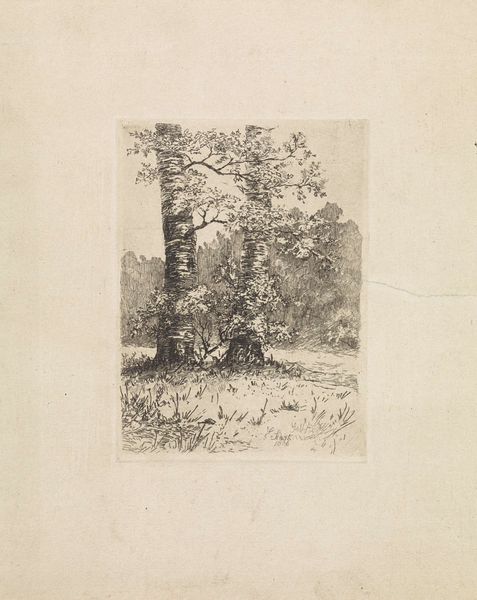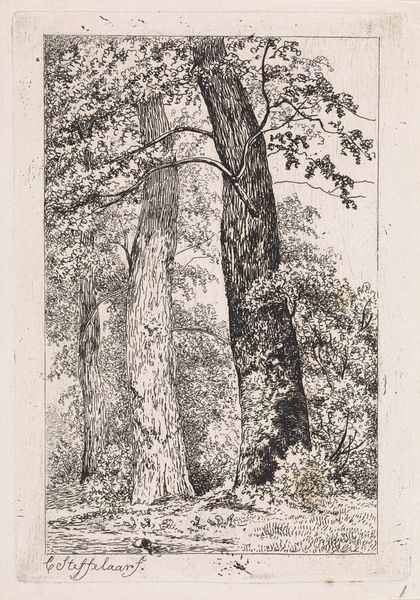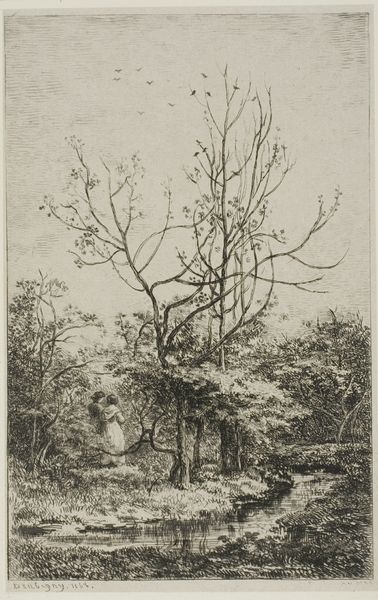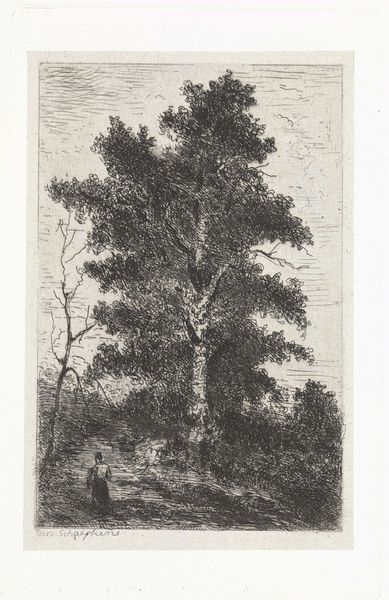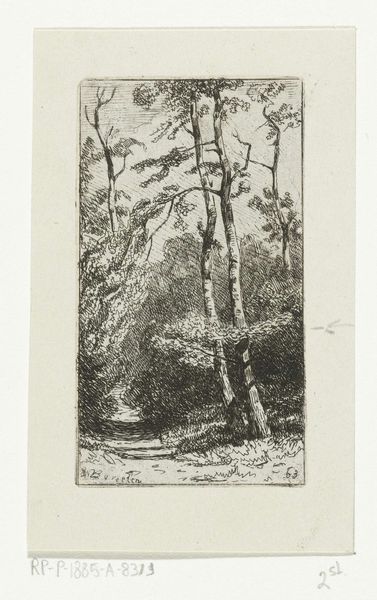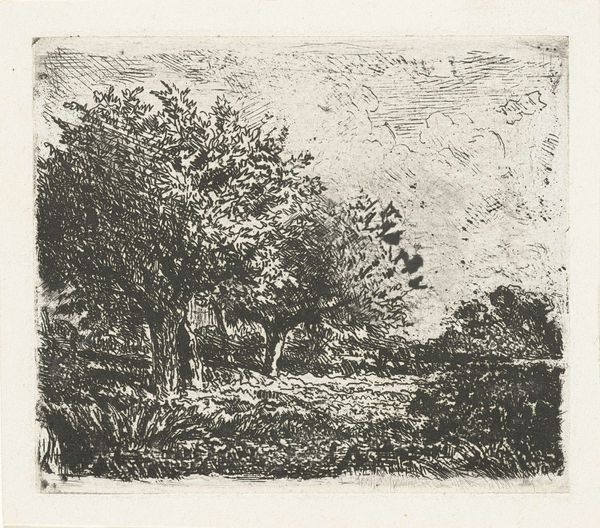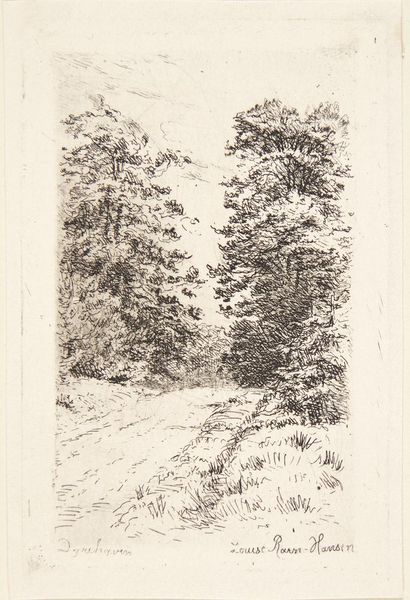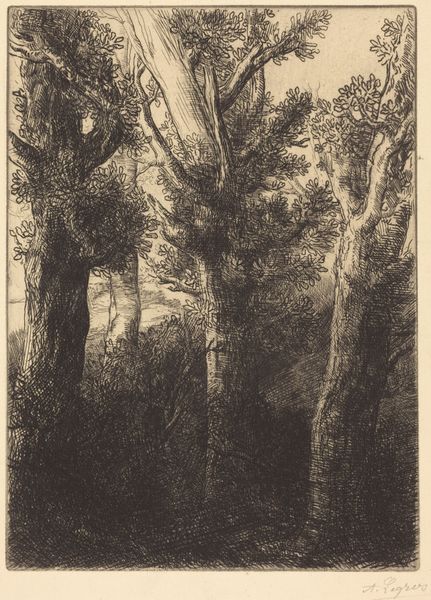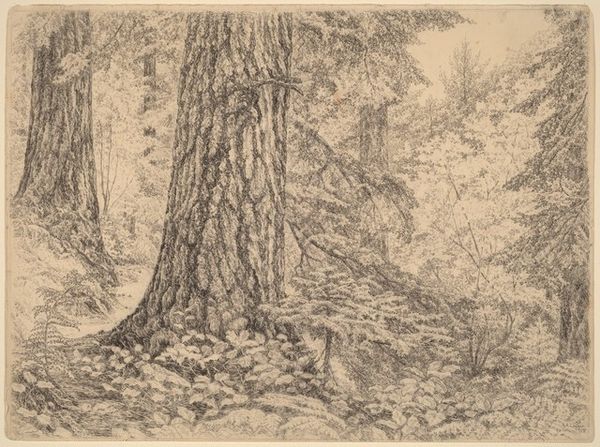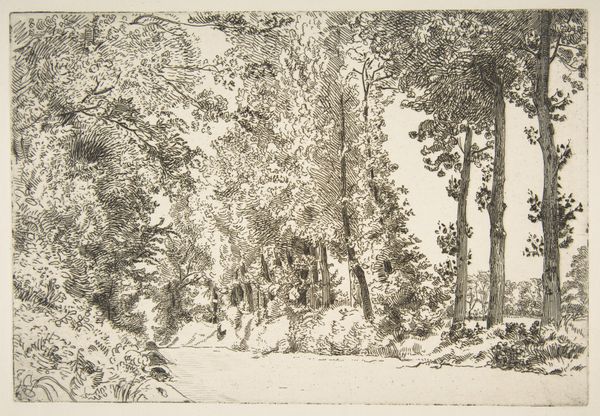
drawing, print, etching, graphite
#
tree
#
drawing
# print
#
etching
#
landscape
#
graphite
Dimensions: height 123 mm, width 91 mm
Copyright: Rijks Museum: Open Domain
Editor: Here we have "Twee bomen", or "Two Trees," an etching and graphite print from possibly 1886, housed here at the Rijksmuseum. I find it serene, almost contemplative, despite the busy texture created by the etching. What do you see in it? Curator: It’s compelling how Stark captures a seemingly simple scene, yet layers it with sociopolitical depth. Looking at those two trees, standing tall yet vulnerable, I’m reminded of how land ownership and access to nature have historically been tied to power and privilege. Consider who had the leisure to wander and appreciate these scenes, and who was excluded. Editor: That’s a perspective I hadn’t considered. I was more focused on the technical aspects, the lines and shading creating the sense of depth. Curator: Exactly, and the technique itself connects to broader narratives. Etching, as a printmaking method, allows for the reproduction of images. How might that democratize art, making landscapes more accessible? And simultaneously, how could it reinforce existing hierarchies if only certain narratives or perspectives are reproduced and circulated? Do you see the trees as subjects, objects, or something else? Editor: Hmm, maybe as witnesses? They've been standing there, observing changes in the landscape and society for much longer than us. Curator: Precisely. Stark is engaging with a tradition of landscape art, but we must remember that these landscapes are never neutral. They’re always charged with historical, social, and political meaning, consciously or unconsciously embedded. It’s our job to unpack those layers. Editor: That gives me a lot to think about, reframing how I look at landscape art entirely. I usually think of the artistic skill first. Curator: Skill is undeniable, but situating the artwork within these larger conversations reveals its complexity. "Two Trees" then becomes a symbol inviting questions about ownership, labor, and the environment itself.
Comments
No comments
Be the first to comment and join the conversation on the ultimate creative platform.
